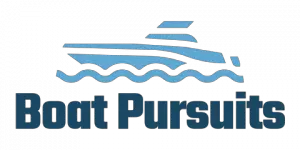Tugboats are powerful vessels that play an essential role in the maritime industry.
But what do the people working on tugboats do? As it turns out, tugboat deckhands are responsible for a variety of tasks, from navigation to towing operations and maintenance.
In this in-depth look, well explore the roles and responsibilities of tugboat deckhands, the different types of tugboats, and the qualifications needed for the job.
Whether youre interested in becoming a tugboat deckhand or just curious about the position, this article has you covered.
Table of Contents
Short Answer
Tugboat deckhands are responsible for the day-to-day operations and maintenance of tugboats.
They are responsible for preparing the vessel for its voyage, ensuring that it is safe to operate, and assisting in navigation.
Deckhands also help keep the vessel in compliance with safety regulations and help load and unload cargo and passengers.
They also help operate the vessel, monitor its systems, and perform routine maintenance.
Types of Tugboats
When it comes to tugboats, there are many different types and sizes.
The most common type of tugboat is the harbor tug, which is typically used for towing and maneuvering vessels in and around harbors and other confined waterways.
There are also ocean-going tugs, which are larger and designed for long-distance towing operations.
Other types of tugboats include harbor cargo tugs, which are used for transporting goods around harbors; ocean-going cargo tugs, which are designed to carry cargo between ports; and icebreakers, which are used to break up thick ice in cold climates.
Other specialized tugboats include fireboats, which are used to fight fires onboard other vessels, and towboats, which are used to tow barges.
All of these types of tugboats require deckhands to operate and maintain them.
Overview of a Deckhands Role

Tugboat deckhands are an integral part of the team that keep tugboats running safely and efficiently.
They are responsible for a variety of duties on board, such as navigation, towing operations, and maintenance.
Deckhands must have a keen understanding of the vessel and its systems in order to ensure the safety and security of the vessel and its crew.
In addition to operating the tugboat’s winch and other machinery, deckhands are responsible for monitoring the vessel’s systems and performing maintenance tasks such as cleaning decks and changing out oil.
They are also required to carry out various safety drills and assist in rescue operations, as well as helping to secure cargo to the tugboat.
Additionally, they must be familiar with the lines, anchors, and other equipment needed to maneuver and secure the tugboat.
The role of a tugboat deckhand is both physically and mentally demanding.
It requires them to pay close attention to their surroundings and the tugboats systems, and to be able to respond quickly in emergency situations.
Deckhands must be able to think on their feet and make quick decisions in order to ensure the safety of the vessel and its crew.
They must also be able to work in a fast-paced environment and maintain a high level of accuracy and attention to detail.
Responsibilities for Navigation
Tugboat deckhands are responsible for navigating the vessel, ensuring that it stays on course and is safe from hazards.
This includes monitoring the vessels course and speed, as well as staying alert for any obstacles or other vessels in the area.
Deckhands should also be familiar with the local navigation regulations, and be able to adjust the vessels course accordingly.
Deckhands are also responsible for assisting with the navigation of the tugboat when it is being towed, and should be aware of the various towing regulations and procedures that apply.
In addition, deckhands should be knowledgeable about the use of navigational aids such as radar, GPS, and buoys, and be able to use them to help plot the tugboats course.
Responsibilities for Towing Operations

Tugboat deckhands are responsible for ensuring the safety and security of the vessel and its crew, as well as carrying out a variety of duties related to the operation of the tugboat.
One of the most important duties of deckhands is towing operations.
This involves setting up and operating the tugboats winch to safely tow large ships and barges.
Deckhands must also be familiar with the lines, anchors, and other equipment needed to maneuver and secure the tugboat.
When towing a large vessel, deckhands must ensure that the tugboat is in the proper position to safely and securely tow the vessel.
This is often done by estimating the distance between the tug and the vessel and adjusting the tugs position accordingly.
Once the tugboat is in the proper position, deckhands must then operate the winch to safely and securely attach the tug to the vessel.
It is also the responsibility of the deckhand to monitor the winch and other machinery during the towing operation.
Additionally, deckhands must be familiar with the navigational requirements for safely towing a vessel.
This includes knowing the local waterways and any potential hazards, such as submerged objects, that could cause problems during the towing operation.
Deckhands must also have an understanding of the speed and direction needed to safely tow a vessel.
Finally, deckhands must be aware of the different types of towing operations and the specific requirements for each.
This includes knowing the different types of tow lines and how to properly connect the tugboat to the vessel.
Deckhands must also be familiar with the different types of anchors and anchoring procedures, as well as the different types of towing equipment and safety procedures.
Responsibilities for Maintenance
Tugboat deckhands are responsible for performing routine maintenance on the vessel, ensuring it is always in top-notch condition.
This includes monitoring vessel systems, such as the engine and fuel tanks, and making sure all safety gear and equipment is in good working order.
Deckhands may also be responsible for changing out oil, washing down and cleaning decks, and inspecting the tugboat for any damage or wear.
They may need to perform repairs as needed, such as tightening lines or replacing worn parts.
Deckhands should also be familiar with the lines, anchors, and other equipment needed to maneuver and secure the tugboat, as well as the tugboat winch for towing operations.
Deckhands must ensure the safety of the vessel and crew during navigation, so it is important for them to be familiar with navigation and safety procedures.
Deckhands must also be prepared to respond to any emergency situation by carrying out various safety drills and assisting in rescue operations.
Responsibilities for Safety and Security

Tugboat deckhands are responsible for the safety and security of the vessel and its crew.
This includes ensuring that the vessel is operating within safe parameters and that all crewmembers are following safety protocols.
Deckhands must be familiar with the lines, anchors, and other equipment needed to maneuver and secure the tugboat.
They must also be aware of any potential hazards and be able to take appropriate action.
Deckhands must also monitor the vessels systems and equipment and be able to identify any potential problems.
They are also responsible for carrying out regular safety drills and assisting in any rescue operations that may be necessary.
In addition, deckhands must be able to properly secure cargo to the tugboat and be able to perform general maintenance such as cleaning decks and changing out oil.
As such, deckhands must be knowledgeable about the vessels navigation systems and be able to accurately read navigational charts.
Qualifications Needed for a Deckhand
For anyone considering a career as a tugboat deckhand, there are certain qualifications that must be met.
In addition to the knowledge and skills necessary to safely operate the tugboat, a deckhand must possess a valid merchant mariner credential (MMC) issued by the United States Coast Guard.
The MMC is an identification card that verifies the deckhand’s qualifications and training, as well as their experience in the maritime industry.
In addition to the MMC, a deckhand must possess a valid driver’s license as well as first aid and CPR certification.
Knowledge of state and federal regulations for tugboats is also important, as well as familiarity with navigational instruments and the ability to read marine charts.
Deckhands should also have experience working in a team environment as well as good communication and interpersonal skills.
Finally, deckhands must be able to lift and move objects of various weights, stand for long periods of time, and work in potentially hazardous weather conditions.
Final Thoughts
Tugboat deckhands play an important role in keeping the vessel and its crew safe and secure, navigating the waters, and performing the necessary maintenance.
Deckhands must have the right qualifications and skills to safely and efficiently complete their responsibilities.
To become a successful deckhand, it is important to understand the type of tugboat, the required duties, and the qualifications needed to be successful.
With the right knowledge and hard work, anyone can become a successful deckhand and help the tugboat safely navigate the waters.

